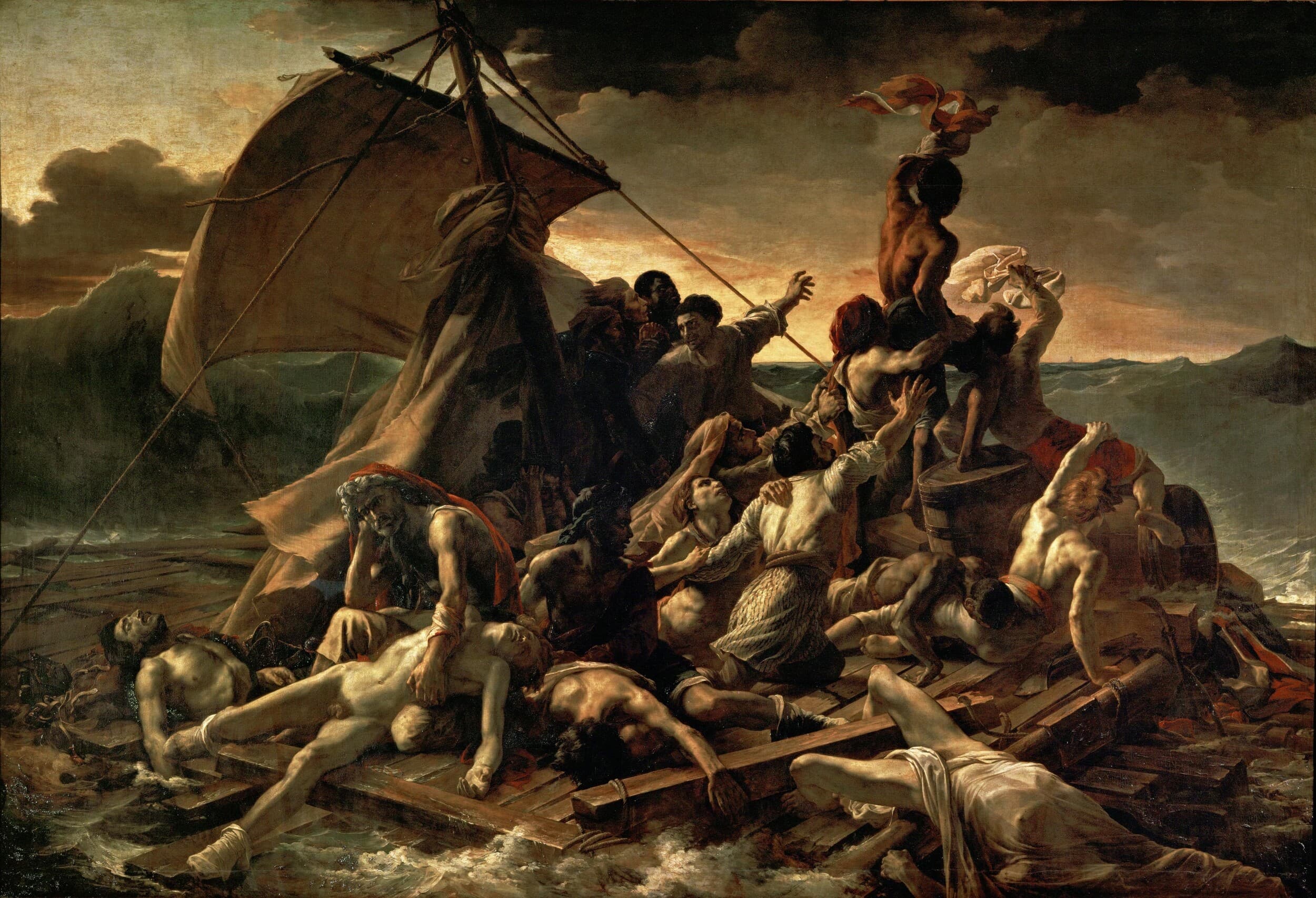Théodore Géricault - The raft of the Medusa

- Title: The raft of the Medusa (Le radeau de la Méduse)
- Artist: Théodore Géricault (1791-1824)
- Date: 1819
- Medium: Oil on canvas
- Dimensions: 490 × 716 cm
“The raft of the Medusa” was completed when Théodore Géricault was 27 with the objective to be a striking work of art to launch his career. The artist chose a subject that had generated great public interest, worked eighteeen months on this painting and chose to make a gigantic work. Eventually, he reached his goal- his work had great resonance and became an icon of French Romanticism.
The painting depicts the ordeal suffered by survivors of a shipwreck, who were abandoned at sea on a raft by their captain. Only 15 out of 150 survived after enduring starvation, dehydration, and cannibalism. The moment captured by Gericault is when the 15 survivors, on the verge of death, see a boat and those who still have enough energy wave at it. The boat will save them.
Gericault painted an energy flowing in a triangular way from a bottom base of dead or almost dead bodies towards the top right where a muscular man very much alive is waving red and white garments, supported by a group of men pointing. This energy of hope is reinforced by the use of colors- while the palette of colors is mostly dark and murky, with a lot of brown, the use of a brighter, yellow attracts the viewer’s eye towards where the rescue boat appears.